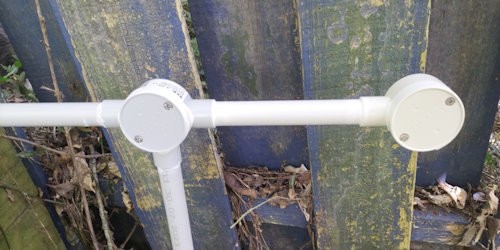In its favour, the screws are SS so it's at least planned for outdoor use.
Has anyone used these outdoors? How do they hold up to rain or moisture in general? In this case if any gets in it's going to run downhill via the convenient pipe to where the electronics will be located.




